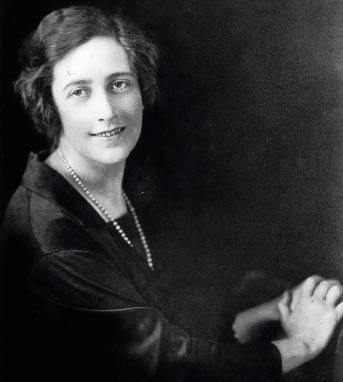The opening paragraph of Duchess of Death’s fourth chapter, in which its subject is about to have her first whodunit published, begins thus:
The opening paragraph of Duchess of Death’s fourth chapter, in which its subject is about to have her first whodunit published, begins thus:
September 25, 1919. John Lane was very pleased with himself as he leaned into the mirror over the sink in his bathroom and examined his beard. Using a small pair of manicure scissors, which he was barely able to handle with his too-chubby fingers, he snipped at a few stray hairs.
And, four lines later in the same faux- finicky vein, the paragraph ends: ‘Yes, he was very pleased.’
Now, if Hercule Poirot’s name were to be substituted for John Lane’s, that passage would read as an amusing parody of Christie’s style. The problem is that Lane was of course a historical figure, co-founder of the Bodley Head as well as the gamy publisher, in his pre-Christie days, of The Yellow Book, and one would rather like to discover how Hack was privy to the niceties of his morning toilette. Or how, when Christie embarked on her great vanishing act, he knew that her breath ‘left a vapour trail for her passion to follow’ and that the gravel under her feet ‘sounded like a knife scraping burnt toast’. Since neither of these images, nor numberless others, are checklisted as quotes from the 5,000 ‘previously unpublished correspondences’ claimed by the book’s blurb, one scarcely needs much in the way of little grey cells to arrive at the conclusion that they’re all Hack’s own gratuitous maunderings.
No doubt there are readers who won’t be too fussed by such fabrications. I confess I have an almost intestinal resistance to them in a biographer, especially one willing to spend pages and pages on Christie’s pets, frocks and grand houses, yet displaying a quite insane indifference to what rendered her of interest in the first place — her books. Take The Murder of Roger Ackroyd, whose central conceit — or, rather, deceit — remains a benchmark for superlative narrative craftiness even in an era when unreliable narrators are beginning to outnumber reliable ones. He accords it two sentences. And Then There Were None, the most perfect whodunit ever written? Five brief, uncommonly unenlightening paragraphs. Plot synopses? None. Analyses? None. Speculations as to why her work became so universally popular? None. Comments on the snobbery, racism and anti-Semitism by which it is pervasively marred? None. I couldn’t help thinking of a comparable biography of Benjamin Britten, let’s say, in which one reads, ‘In 1945 his opera Peter Grimes was premièred to wide acclaim. Alas, it was only two weeks later that Chouchou, his favourite tabby, passed away. . . . ’ I’m making no comparisons, understand, but surely the principle is the same.
This, then, is a book which is not just unauthorised but unauthored. And as for that ‘unauthorised’ tag, conspicuously blazoned on the cover yet difficult to reconcile with its author’s boasted access to all those unpublished letters, unless the fact that Christie’s second husband, the eminent archaeologist Max Malloran, had unconsummated homosexual leanings at Oxford is calculated to set your heart racing, there’s no revelation here worthy of the word as used in this context.
I personally am grateful, nevertheless, for having read Duchess of Death, for it effectively squelches a notion I floated in one of the several essays I’ve written about Christie. I ventured to suggest that the pivotal murders, if by no means the least important element of her whodunits, were equally by no means the most. I even went so far as to propose that, since what their fans appreciate above all are the vividly evoked textures and trappings — the bridge parties at St Mary Mead, Poirot’s Mayfair service flat with its gleaming oil-fired radiators, etc — it ought to be possible to eliminate the ingredient of crime altogether.
Well, I was wrong. What Hack’s book demonstrates is that Christie’s life was a Christie novel without any murder. And it’s because it was so boring a life to read about that he’s forced to make such a production number out of the single event which even approaches underhand activity, her disappearance in the 1920s after her first husband shocked her by requesting a divorce.
What Agatha Christie needs is not another biography but, as the most famous English writer of the 20th century (isn’t she?), a genuinely critical study, one unencumbered by the ridiculous law that no solutions should ever be divulged. If there exists a publisher out there who finds the idea appealing, I myself would be more than happy to oblige.






Comments